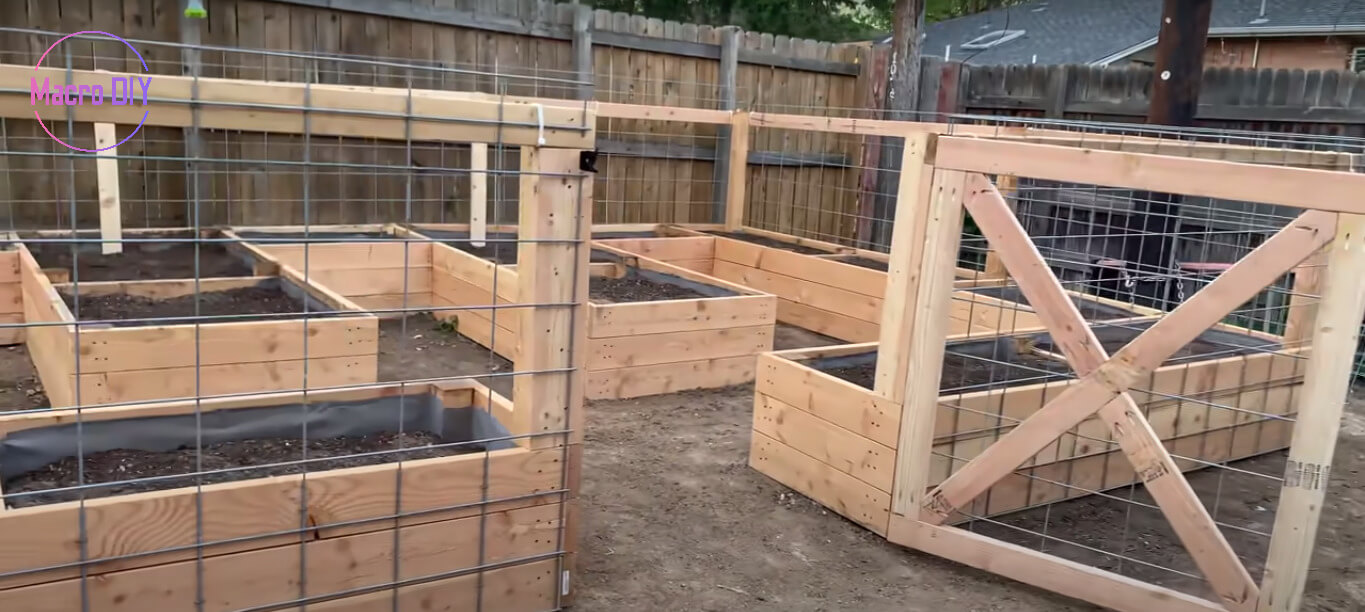Revitalize your outdoor space with a DIY wooden edging project that adds both elegance and structure to your garden. Follow these straightforward yet impactful steps to achieve professional-grade results that elevate your landscape’s visual appeal.
Start by gathering all necessary materials, including landscaping timber, galvanized nails, garden pegs, and Resene Waterborne Woodsman Stain in your preferred shade. Measure and cut the landscaping timber to fit the edges of your garden, ensuring precise cuts for a refined look and seamless integration.
Dig the trench to the appropriate depth and width, using the timber lengths as guides to maintain straight lines and uniformity throughout. Secure garden pegs along the trench at regular intervals to anchor the timber firmly in place and prevent shifting.
Carefully position the timber into the trench, ensuring it rests level with the ground surface. Use a spirit level to verify evenness and make any necessary adjustments. Secure the timber to the garden pegs using galvanized nails, providing a sturdy and long-lasting hold that withstands the elements.
Enhance the appearance and durability of your garden edging by applying Resene Waterborne Woodsman Stain. Follow the natural grain of the wood for optimal coverage and a seamless finish. Allow the first coat of stain to dry thoroughly before applying a second coat for enhanced durability and color consistency.
With your newly installed garden edging, your outdoor space will radiate charm and sophistication, accentuating the overall beauty of your landscape. Experiment with different stain colors to complement your garden’s aesthetic and reflect your personal style.
Roll up your sleeves and embark on this rewarding DIY project to create a stunning wooden border that defines and enhances your garden. With a touch of creativity and dedication, you’ll take pride in completing a project that brings lasting beauty to your outdoor environment. Happy crafting, and may your garden flourish with newfound allure!
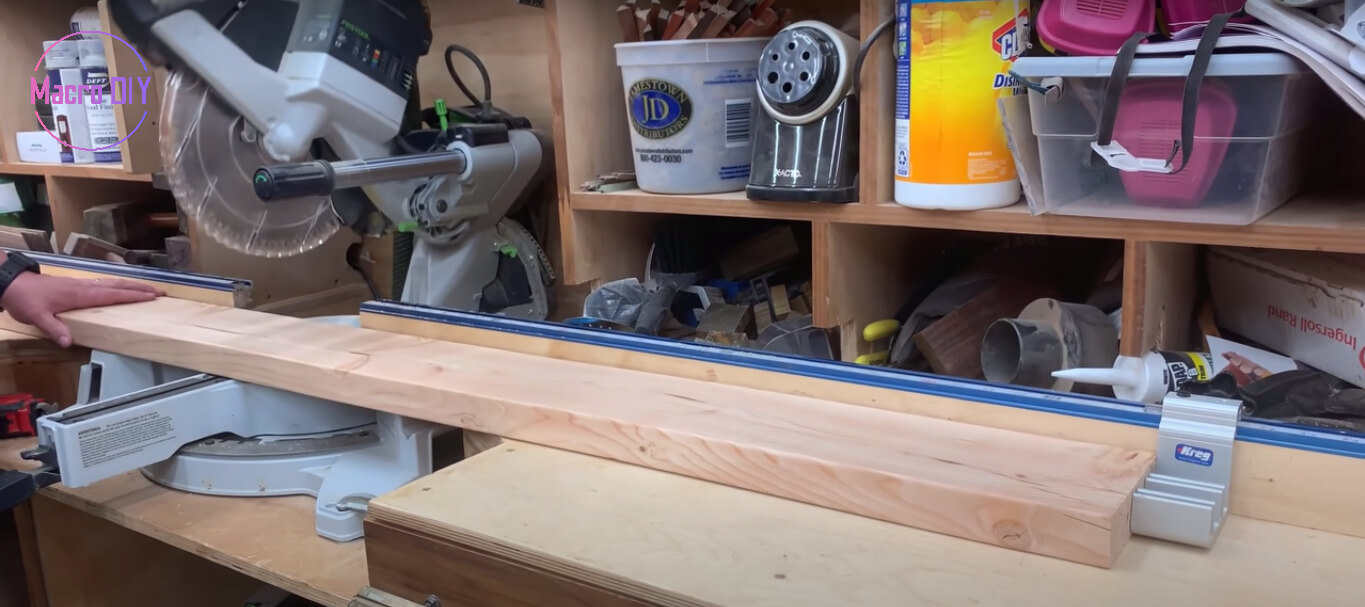
Contents
- Crafting Your Garden’s Borders: A DIY Adventure
- Unveiling the Essence of DIY Garden Edging with Wood
- Gathering Your Arsenal of Materials
- The Step-by-Step Journey Unfolds
- Step 1: Precision in Measurement and Cutting
- Step 2: Delve into Trench Preparation
- Step 3: Establish Stability with Garden Pegs
- Step 4: Aligning Timber with Precision
- Step 5: Fortify with Galvanized Nails
- Step 6: Embrace Symmetry with Right Angles
- Step 7: Infuse Color with Stain Application
- Step 8: Seal the Brilliance with a Second Coat
- Strengthening the Foundation: Enhancing Durability and Stability
- Beyond the Basics: Exploring Advanced Techniques and Considerations
- Frequently Asked Questions about DIY Garden Edging with Wood
- What materials are required for DIY garden edging with wood?
- What type of wood is best suited for DIY garden edging?
- How do I install wooden garden edging?
- How can I ensure the wooden edging stays secure?
- What should I do if I encounter obstacles while digging the trench?
- Is DIY garden edging with wood suitable for all garden designs?
- How can I ensure straight and level garden edging?
- What are some maintenance tips for wooden garden edging?
- Conclusion
Crafting Your Garden’s Borders: A DIY Adventure
Welcome, fellow DIY enthusiasts, to an exciting journey into the realm of garden transformation with enchanting wooden edging! Prepare to immerse yourself in a world where beauty meets functionality as we embark on this exhilarating quest to elevate your outdoor space to new heights.
Unveiling the Essence of DIY Garden Edging with Wood
Let’s begin with a captivating introduction to our project’s essence and significance. Beyond mere aesthetics, DIY garden edging embodies the art of delineating boundaries, combating soil erosion, and infusing your landscape with structural elegance. There’s a profound joy in crafting with our own hands, sculpting nature’s canvas into a masterpiece.
Gathering Your Arsenal of Materials
Equip yourselves with the necessary tools and materials to embark on this enchanting endeavor:
Materials Needed:
- Landscaping timber (150mm x 50mm H4 treated)
- Galvanized jolt head nails (75mm)
- Garden pegs
- Resene Waterborne Woodsman Penetrating Oil Stain (tinted to Resene Warm Kwila)
- Construction adhesive (alternative method)
- Landscape fabric and staples (optional alternative method)
- Galvanized corner braces
- Galvanized mending plates
- 2-inch galvanized deck screws
- #3 rebar (optional alternative method)
- Rectangular wooden blocks (70mm x 70mm softwood, planed)
- Transparent outdoor glaze for wood
Tools Needed:
- Hammer
- Large mallet
- Paintbrush
- Paint stirrer
- Pencil
- Coarse sandpaper
- Saw
- Set square
- Spade
- Spirit level
- Tape measure
- Drill and bits
- Protractor
- Grass trimmer (optional alternative method)
- Paint spray system (optional alternative method)
- G-clamps (alternative method)
- Hand sledge or hammer (alternative method)
With your arsenal prepared, let’s delve into the intricacies of our project!
The Step-by-Step Journey Unfolds
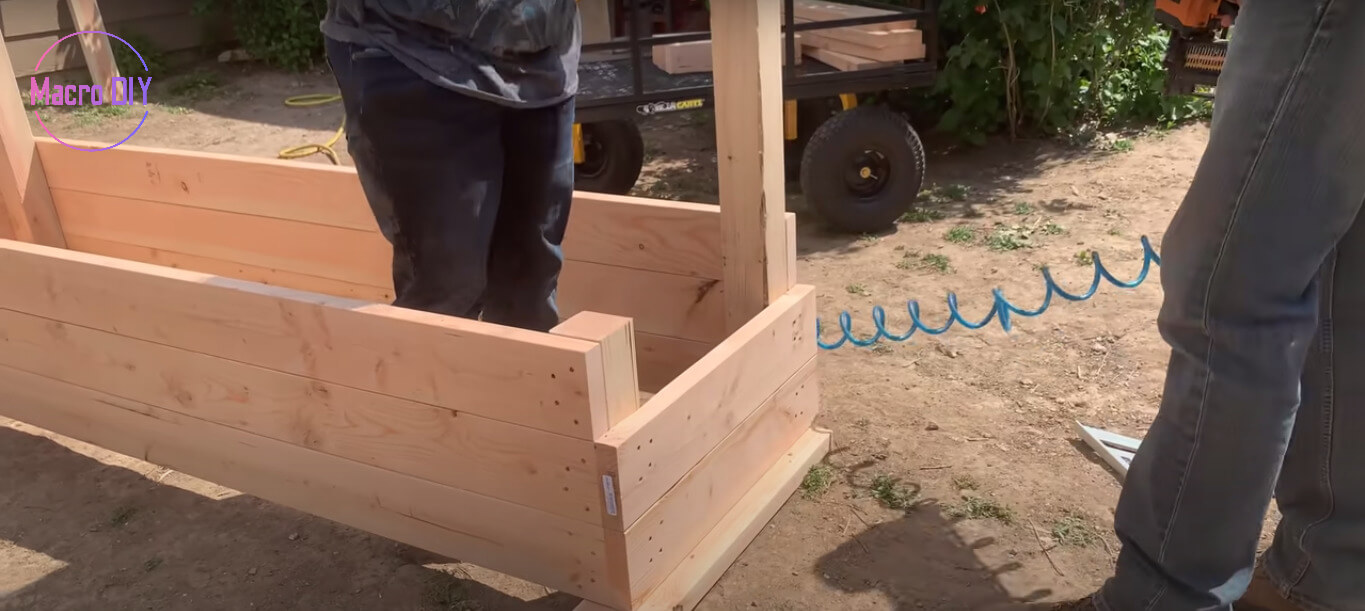
Step 1: Precision in Measurement and Cutting
Begin by meticulously measuring and cutting the timber to size, ensuring accuracy and finesse in every slice. Smooth out rough edges with sandpaper for a flawless touch.
Step 2: Delve into Trench Preparation
Take up your spade and carve out a narrow trench along the garden’s edges, maintaining impeccable straightness for stability and visual appeal.
Step 3: Establish Stability with Garden Pegs
Forge ahead by anchoring garden pegs at regular intervals within the trench, laying the groundwork for sturdy support and steadfastness.
Step 4: Aligning Timber with Precision
With a keen eye for alignment, position the timber into the trench, ensuring levelness and straightness with the aid of a spirit level.
Step 5: Fortify with Galvanized Nails
Secure the timber firmly in place by driving galvanized nails into the garden pegs, fostering resilience against the elements.

Step 6: Embrace Symmetry with Right Angles
Embrace the pursuit of perfection as you verify the integrity of corners with a set square, ensuring symmetrical allure throughout.
Step 7: Infuse Color with Stain Application
Immerse yourself in the artistry of staining as you apply Resene Waterborne Woodsman Stain, honoring the wood’s grain with graceful strokes.
Step 8: Seal the Brilliance with a Second Coat
Exercise patience and dedication as you await the stain’s drying, then grace your creation with a second coat for enduring beauty and protection.
Behold, your masterpiece of DIY garden edging stands before you, a testament to your craftsmanship and devotion. Stay tuned for further revelations as we explore advanced techniques to enrich your outdoor sanctuary. Until then, may your garden flourish with newfound splendor!
Read more: DIY garden flags
Strengthening the Foundation: Enhancing Durability and Stability
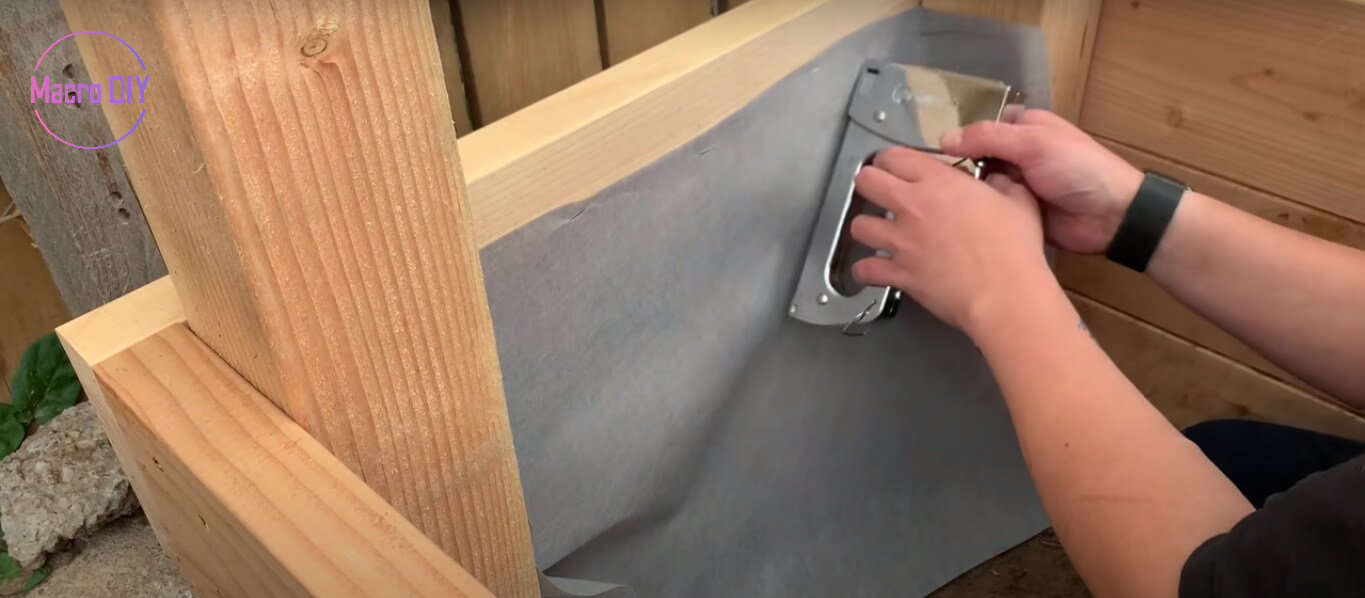
Congratulations on laying the groundwork for your DIY garden edging! Now, let’s delve deeper into fortifying its durability and stability, ensuring it remains a timeless centerpiece in your outdoor sanctuary.
The Art of Material Selection: A Quest for Quality and Longevity
When it comes to material selection, prioritize quality to safeguard your creation against the ravages of time. Opt for treated pine sleepers with a minimum thickness of 50mm, fortified to resist decay and pesky insect invaders. Investing in superior materials now ensures enduring resilience, sparing you from future woes.
To reinforce your edging’s strength, consider incorporating metal brackets or timber connectors at pivotal junctions. These reinforcements offer invaluable structural support, fortifying your edging’s integrity and extending its lifespan.
Fasteners: Guardians of Stability
Selecting the right fasteners is paramount to securing the stability of your garden edging. Choose corrosion-resistant screws, such as galvanized or stainless steel variants, engineered to withstand outdoor elements without succumbing to rust’s relentless grasp. Ensure the screws’ length and thickness are apt, forging secure connections between sleepers and stakes.
Read more: DIY garden hose holder free standing
Installation Mastery: Building a Solid Foundation for Success
Mastery of installation techniques is the cornerstone of a robust and stable garden edging. Maintain precise alignment of sleepers, employing a string line or straight edge to uphold straight lines and perfect angles. When uniting sleepers at angles, pre-drill pilot holes to avert splitting, and employ metal brackets or timber connectors for added fortitude.
Furthermore, driving timber stakes into the earth behind the sleepers furnishes vital reinforcement, thwarting warping or dislodgment over time. These stakes anchor the edging steadfastly, fortifying it against nature’s whims.
Final Flourishes: Sustaining Beauty for Eternity
Preserving your wooden garden edging’s allure demands attention to finishing touches. Apply protective finishes like wood preservatives or outdoor sealants to shield the wood from moisture, UV rays, and environmental adversities. Regular maintenance rituals, including diligent cleaning and periodic resealing, uphold your edging’s integrity and aesthetic allure throughout the ages.
By championing meticulous material selection, opting for the right fasteners, mastering installation finesse, and embracing meticulous finishing rituals, you guarantee your DIY garden edging’s endurance and magnificence. Now, let’s embark on the next phase of your journey toward realizing your outdoor oasis’s full splendor.
Beyond the Basics: Exploring Advanced Techniques and Considerations
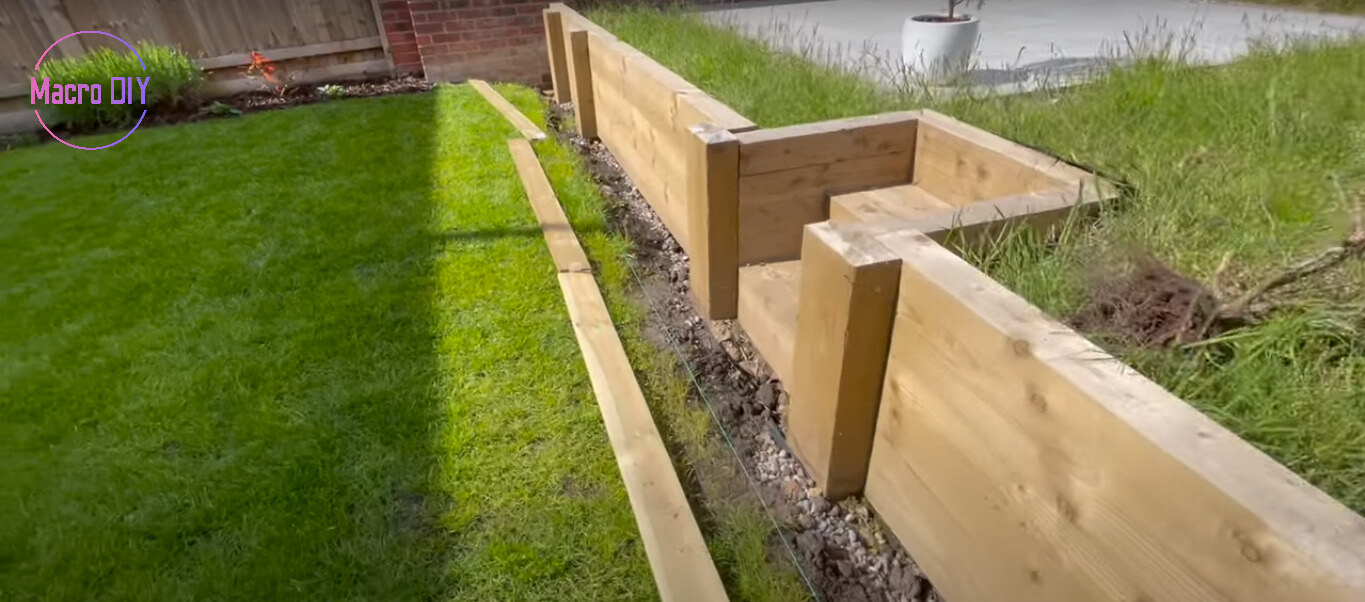
As we venture further into the world of DIY garden edging, let’s uncover some advanced techniques and considerations to amplify the beauty and functionality of your outdoor haven.
Embracing Landscape Timber Edging: Form Meets Function in Perfect Harmony
Landscape timber edging stands as a versatile and visually captivating method to delineate garden beds and pathways. This timeless approach not only enhances your landscape’s aesthetic allure but also serves the pragmatic purpose of containing soil and mulch.
To embark on this endeavor, gather landscape timbers, a shovel, a mallet, and landscaping spikes. Begin by outlining your desired garden bed or pathway shape, then excavate a trench slightly deeper than the timbers’ height. Next, snugly position the timbers against each other, utilizing a mallet to firmly secure them. Finally, drive landscaping spikes through the timbers into the earth to ensure steadfast stability.
Crafting a Rustic Wooden Flowerbed Border: Infusing Character into Your Landscape
For aficionados of rustic charm, a wooden flowerbed border presents an ideal canvas to showcase creativity. Crafted from weathered timber or reclaimed wood, this border infuses character and warmth into any garden or flowerbed.
Equip yourself with wooden planks, a saw, nails, and a hammer, and let your imagination flourish. Begin by measuring and cutting the planks to your desired length, then arrange them in a border encircling your flowerbed. Secure the planks together using nails or screws, ensuring a snug fit and robust construction. As you admire your creation, envisage the vibrant blooms that will grace this charming rustic border, imbuing your outdoor sanctuary with whimsical allure.
Read more: Garden stool DIY
Introducing Lawn Boardroom in Front of a Retaining Wall: Fusing Style with Seamless Transitions
Transforming the space in front of a retaining wall into a manicured lawn boardroom offers a distinctive opportunity to blend style with functionality seamlessly. This project not only enhances your landscape’s visual appeal but also fosters a fluid transition between different outdoor elements.
To tackle this venture, procure turf, soil, a shovel, and a level. Begin by preparing the soil, ensuring it’s level and devoid of debris. Next, lay the turf in a staggered pattern, pressing it firmly into the soil to facilitate root establishment. Pay meticulous attention to the edges, ensuring a seamless fusion between the lawn and the retaining wall. As you gaze upon the freshly laid turf, envision the gatherings and festivities that will grace this inviting outdoor expanse, bridging the gap between nature and architecture.
Armed with these advanced techniques and considerations, you’re poised to elevate your outdoor sanctuary into a realm of beauty and serenity. Stay tuned for more insights to enrich your gardening endeavors further!
Frequently Asked Questions about DIY Garden Edging with Wood
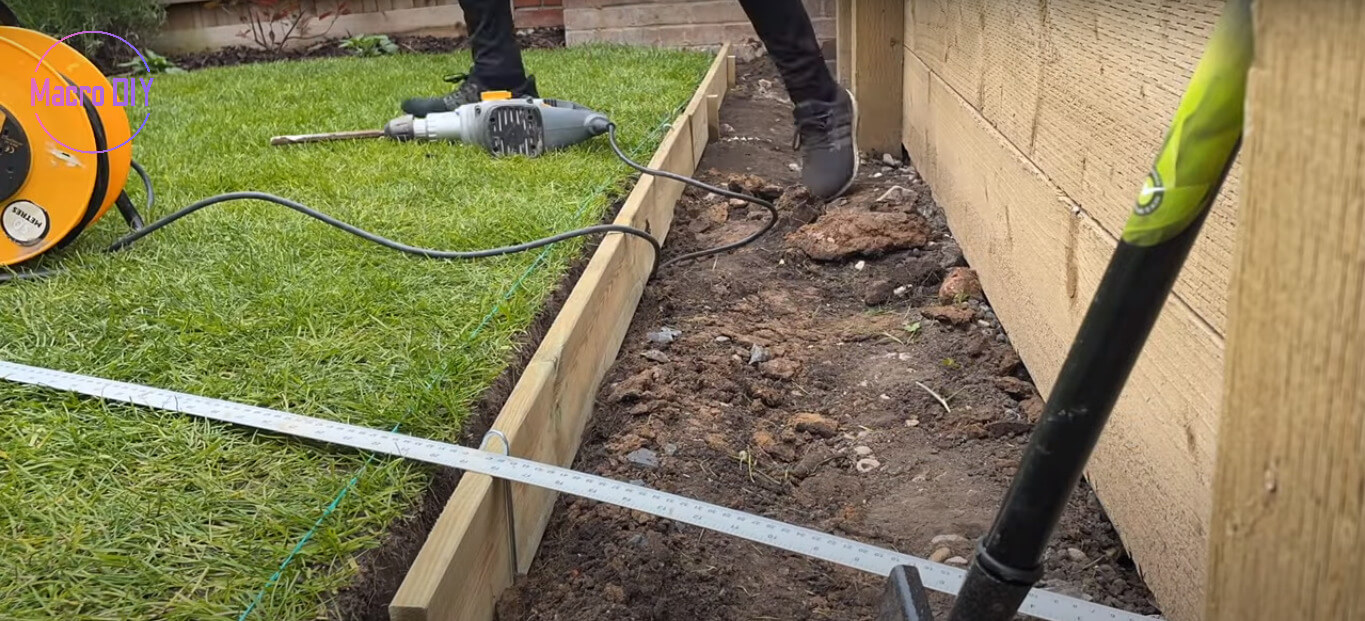
Curious about embarking on a DIY garden edging with wood? Here are answers to some common questions to help you get started on your journey to beautify your outdoor space.
What materials are required for DIY garden edging with wood?
To kickstart your DIY adventure, you’ll need the following materials:
- Landscaping timber
- Galvanized nails
- Garden pegs
- Hammer
- Mallet
- Paintbrush
- Sandpaper
- Saw
- Set square
- Spade
- Spirit level
- Tape measure
- Wood stain
What type of wood is best suited for DIY garden edging?
For optimal durability and longevity, opt for high-quality materials like treated pine sleepers or pressure-treated landscape timbers designed specifically for ground contact. These woods are resistant to decay and insect damage, making them ideal for outdoor applications.
How do I install wooden garden edging?
The installation process involves several steps:
- Measure and cut the wood to fit your garden edges.
- Prepare the trench to the appropriate depth and width.
- Install garden pegs along the trench to secure the timber.
- Position the timber into the trench, ensuring it sits level with the ground.
- Secure the timber to the pegs using galvanized nails.
- Apply wood stain for protection against the elements.
How can I ensure the wooden edging stays secure?
To ensure stability and prevent movement over time, use galvanized or stainless steel screws to secure the wood. Additionally, driving timber stakes into the ground behind the sleepers provides extra support and prevents warping or dislodging.
What should I do if I encounter obstacles while digging the trench?
If you encounter obstacles such as stones or drainage systems while digging the trench, adjust the position of the trench accordingly to accommodate the wooden edging’s height. You can also consider installing posts into the ground for added stability.
Is DIY garden edging with wood suitable for all garden designs?
Yes, DIY garden edging with wood is incredibly versatile and can enhance the appearance of various garden designs. Feel free to experiment with different wood stains or finishes to match your garden’s unique aesthetic.
How can I ensure straight and level garden edging?
Use a spirit level to check for evenness while positioning the timber, making adjustments as needed. Additionally, installing garden pegs at regular intervals along the trench will help maintain a straight line for the edging.
What are some maintenance tips for wooden garden edging?
To preserve the integrity of your wooden garden edging over time, consider the following maintenance tips:
- Regular cleaning to remove debris and dirt buildup.
- Resealing or reapplying wood stain periodically to protect against moisture and UV rays.
- Applying a protective finish such as wood preservative or outdoor sealant to prolong its lifespan.
By following these maintenance practices, you can ensure your wooden garden edging remains sturdy and beautiful for years to come.

Conclusion
Behold, esteemed aficionados of the DIY realm! We’ve embarked on a thrilling odyssey traversing the intricate landscape of DIY garden edging with wood, unearthing a plethora of profound insights and boundless inspiration along our journey.
In our relentless pursuit of the ultimate garden edging nirvana, we’ve delved deep into the labyrinth of material selection, mastering the arcane arts of installation techniques, and fortifying the bastions of durability and stability. Our exploration has led us through the labyrinthine passages of landscape timber edging, where versatility reigns supreme; the rustic hinterlands of wooden flowerbed borders, where charm and nostalgia intertwine; and the majestic realms of lawn boardroom installations, where elegance and functionality converge in harmonious splendor.
Yet, dear compatriots, this is merely the prologue of your epic saga into the realm of DIY endeavors! As you embark upon your own odyssey to metamorphose your outdoor sanctuaries, remember to embrace the tempestuous temerity of your creativity, surmount obstacles with unwavering resolve, and bask in the euphoria of manifesting your visions into tangible reality.
Read more: Garden tool organizer DIY
So, gather your implements of creation, summon forth the boundless depths of your ingenuity, and let us embark upon this grand expedition together. Share your triumphs, seek counsel from kindred spirits of the DIY fraternity, and revel in the jubilant camaraderie of crafting something truly extraordinary.
Know that the Macro DIY fellowship stands unwaveringly by your side, an indomitable bastion of support and inspiration. Together, we shall continue to push the boundaries of DIY excellence, sculpting outdoor sanctuaries that resonate with the timeless cadence of beauty and serenity.
Until we reconvene, adieu, dear artisans of the soil! May your gardens blossom with the resplendent hues of creativity and innovation, echoing the triumphant symphony of human endeavor.
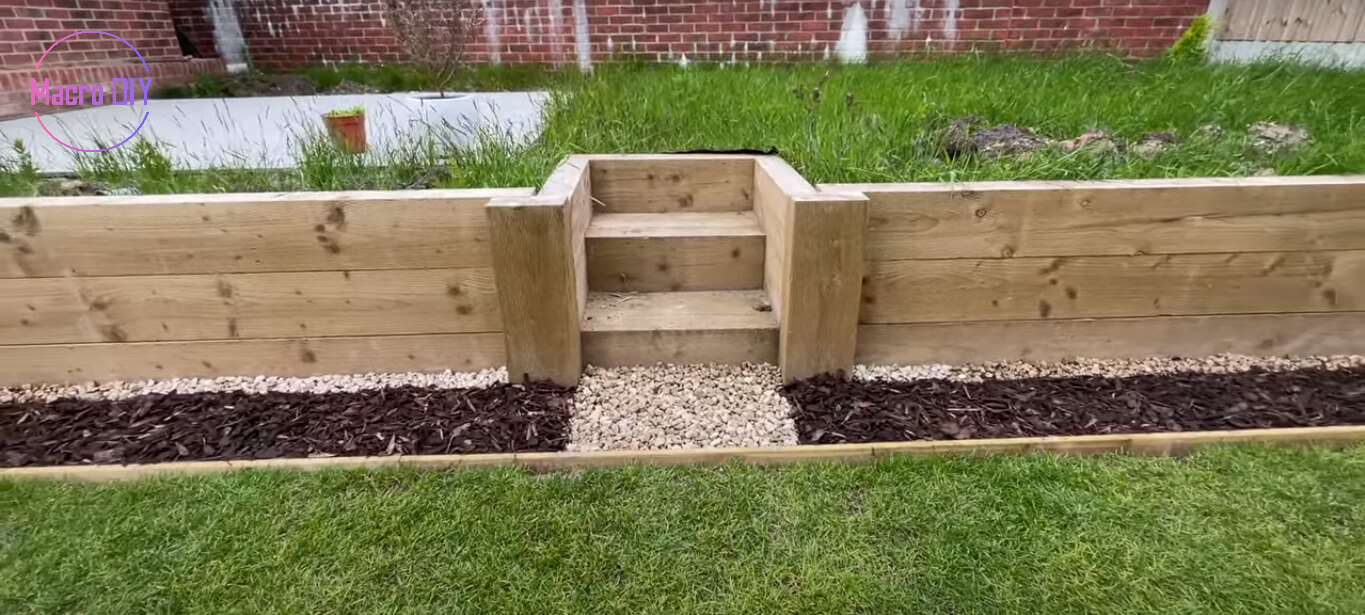
Key Takeaways for DIY Garden Edging with Wood:
- Material Selection: Choose high-quality treated timber like landscaping timber or pine sleepers for durability and resistance to decay and insects.
- Fasteners: Opt for corrosion-resistant screws such as galvanized or stainless steel screws for secure and long-lasting connections.
- Installation: Measure and cut the timber precisely, then secure it using garden pegs or posts. Ensure the timber sits level and use a spirit level to check for evenness.
- Finishing Touches: Apply a protective finish like wood stain or outdoor sealant to extend the lifespan and maintain the appearance of the wooden edging.
- Additional Support: For added stability, consider driving timber stakes into the ground behind the sleepers or using rebar to pin the timbers down.
- Cosmetic Enhancements: Add decorative elements like angled cuts or additional blocks for a visually appealing finish.
- Maintenance: Regular maintenance, such as cleaning and resealing, is essential to preserve the integrity of the wooden edging over time.
- Considerations: Depending on the terrain and pressure on the edging, additional reinforcement may be necessary. Options include drilling holes and driving spikes into the ground or installing lateral supports for retaining walls.
By adhering to these key takeaways, DIY enthusiasts can create sturdy and attractive garden edging with wood, enhancing the beauty and functionality of their outdoor spaces.

